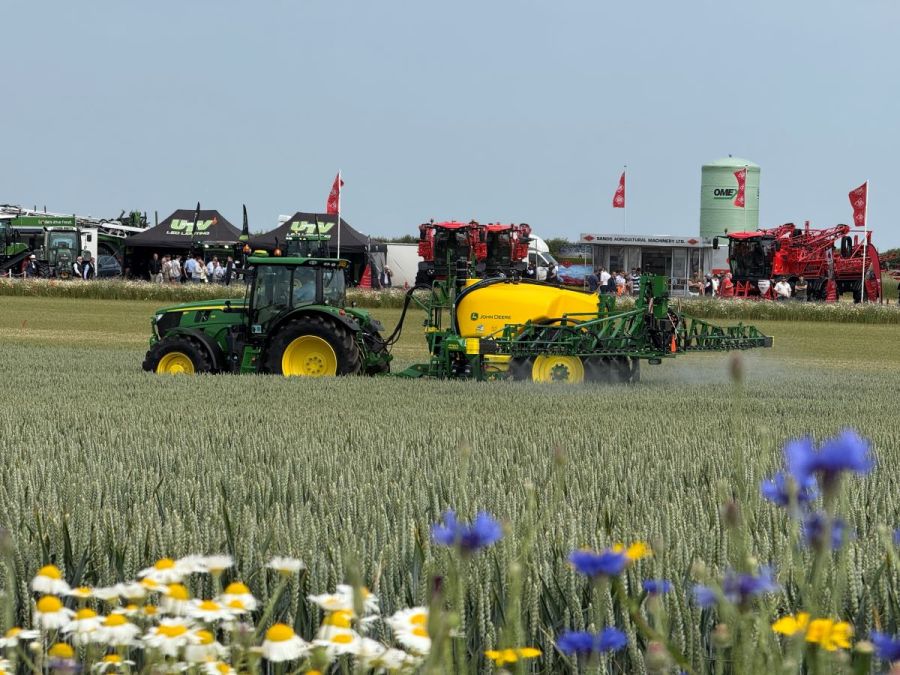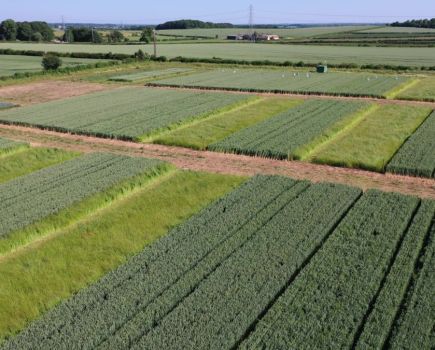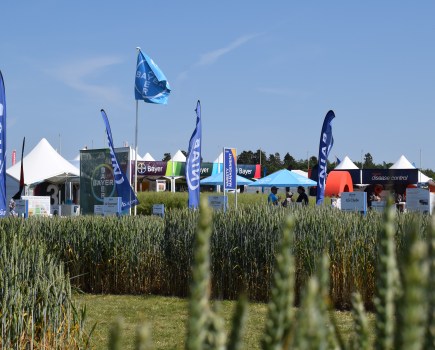An optimistic Cereals Event explored not just the issues and evolving landscape facing UK agriculture, but what farming and the wider industry is doing to meet these challenges. CPM reports.
“This is a prime example of current public spending – with all its inefficiency – crowding out private investment.” JEREMY MOODY
By Melanie Jenkins
It could be said that agriculture has faced a barrage of on-going challenges in recent years, with extreme weather being the most consistent of these. While the Cereals Event, on 11-12 June, tackled these through its seminar programme, it also looked to provide hope and potential solutions.
One of the most recent challenges to come to the fore – the promise of increased defence and health spending from government, leaving less for Defra – saw the opening seminar of this year’s event kick off with a reiteration of the importance of food security and how British farmers are essential.
NFU president, Tom Bradshaw stated the UK is moving in a different direction, but this shouldn’t be to the detriment of domestic food security. “We must accept that the old support schemes have ended – any future money will be earned income; public money for public goods and a contract for services that farming provides to society. I think we should all stop talking about support because this suggests that it’s propping up farming businesses.”
However, with the potential threat of escalating hostilities and conflict arising in the Middle East and potentially closer to home, Tom highlighted the increasing importance of domestic food security.
“Having a thriving domestic food industry that can’t simply be cut off is a critical part of defence spending. With the government recognising that food security is a critical part of national security in its manifesto, it now has to deliver on that and enable a thriving food system in the UK in this volatile world.”
Farmer Mark Means voiced his concerns that while viably producing homegrown food is one issue, the country also requires working mills and food processing systems. He believes that those purchasing produce should pay a fair price to help keep farm businesses running, because without these, the rest of the UK’s processing industry would also suffer.
Diana Overton, managing director of Frontier believes it’s important for famers to understand what the retailers are looking for and what the intermediaries demand to meet those requirements. “There are private funding premiums available for sustainable supply chain contracts that involve farmers making commitments to help those end processors and retailers meet their own obligations and targets, whether these are CO₂ reductions, biodiversity improvements and a whole lot more,” she said.
Also speaking at the event, the CAAV’s Jeremy Moody highlighted the push for the public to eat more fruit and vegetables. “The feeling is that British agriculture should respond to this by producing more but the gap in the middle is economics. This gap is a world where reward isn’t in line with the increased risk and scale of working capital required for farmers – it’s the same challenge that broadacre cereal farming is facing at the moment.
“Among ministers, landownership is coming to be seen as more of a service to the country where you have some form of obligation and role in delivering for the environment. So we’re having to manage more risk in all of this with extreme weather conditions piling onto the challenges.”
However, he believes the industry will find different routes through this, but it may involve looking at what could make for profitable agriculture in this country.
Moving onto inheritance tax, he stated that what’s currently on the table should be taken as read and what will be legislated for. “Governments do unpick their mistakes but this is a prime example of current public spending – with all its inefficiency – crowding out private investment. It’s something to be concerned about and a challenge we seem unable to convey to ministers the impact of on small businesses.
“It’s a large tax tail, but we don’t have to let it wag the business dog. Look at where you want to be in 10-15 years’ time to help frame your objectives and consider where the future of the business lies, because this could be different to where the family thinks the capital assets should go.
“We’re turning over stones that most won’t have had to turn over for a generation. But through the ingenuity of the farming and advisory world, between us, we’ll get it sorted for a lot of people,” he stated.
“Take advice, consider and work your way through this. One of the upsides of the tragedy of the inheritance tax proposals is that it’s forcing a level of discussion on farm about questions which we’ve avoided for a generation. This gives a good tax reason to look at succession, so take advantage of this so you can think ahead and plan for the future.”
While agri-tech won’t solve the inheritance tax issue, one way the UK Agri-Tech Centre’s Harry Langford feels the industry can overcome some of the challenges it faces, is through improvements in efficiency enabled by the adoption of new technology.
“Innovation in agriculture generates efficiency and there’s value for sustainable options via input reduction technologies combined with output optimisation. As well as that, we must remember that farming isn’t easy and there are risks associated with the impact of climate change and extreme weather, as well as soil health and biodiversity decline on farm.”
With this in mind, the Centre surveyed a range of individuals across agri-tech to determine what they perceived as the greatest opportunities for innovation during the next decade, he said. Based on this, it’s set out innovation pipelines, focussing on intelligent agriculture and how sensor and machine learning technology can be advanced with enabling technologies to make them more efficient and reduce power consumption.
“This’ll allow us to collect more data and be proactive and predictive in our scenario planning for bespoke farming systems,” said Harry.
In the biological space, the short-term focus is on what targeted biological controls can be developed to tackle pest and disease threats which can lead to a holistic perspective on microbial and precision breeding approaches to deliver lower input systems.
“For instance, we’re moving onto novel sensing technology such as hyperspectral imagery, electrochemistry or biosensing technology, to allow the collection of more data. While using machine learning to profile aspects like crop nutrients and disease status in real time, can give the opportunity to ask more detailed questions – not just what can you do, but how and are there multiple options open.”
Early detection is another area the project has focused on. Work undertaken with agri-tech innovator, Fotenix, aims to use low-cost multispectral imaging to detect pre-symptomatic disease in plants. “This could allow farmers to intervene earlier, using IPM or biological solutions and consider how to precision apply to save a significant amount of spray volume,” explained Harry.
“We’re also beginning to enter a scenario that reduces spray volumes while opening the door to other tools such as biological products. For example, work done with biotech company, Bactobio, has looked at using biofungicides to combat septoria,” he added.
There could also be options to use less fertiliser or apply it in a different way, such as using a titanium dioxide catalyst to remove pollution from the air and convert it, using sunlight, to nitrates on the leaf.
This is a concept the UK Agri-Tech Centre has been exploring with Dyson Farming. “We’re trying to understand how far we can push this system and look at if we can integrate it with endophytes and significantly reduce the amount of synthetic nitrogen applied.
“Conventional fertilisation works really well which is the reason why it’s popular,” observed Harry. “This is why we have to be quite sure we have the right technology and associated practice to be able to drive these towards commercialisation,” he concluded.
This article was taken from the latest issue of CPM. Read the article in full here.
For more articles like this, subscribe here.
Sign up for Crop Production Magazine’s FREE e-newsletter here.




